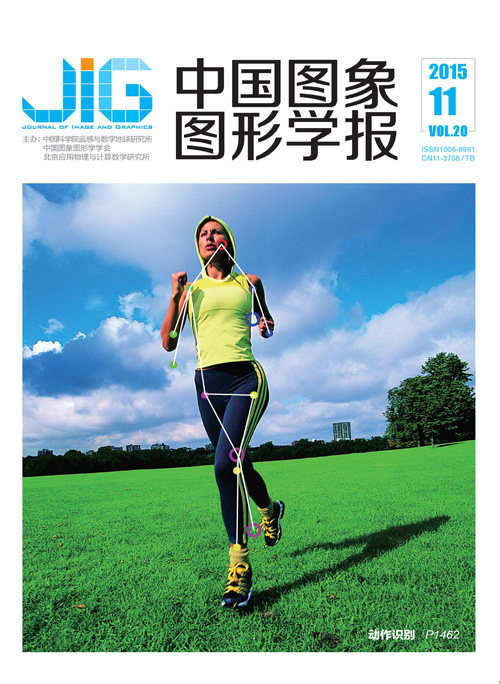
融合梯度信息与HVS滤波器的无参考清晰度评价
摘 要
目的 目前无参考图像质量评价算法的性能存在较大的提升空间,为了提高清晰度评价技术,提出了一种基于梯度信息与HVS滤波器的无参考清晰度评价算法(GI-F)。方法 该算法首先利用梯度算子计算各像素点的梯度信息,再通过HVS滤波器得到加权和作为图像的清晰度指标。结果 在公开数据库LIVE、TID2008和CSIQ上进行的实验,GI-F与S3(Spectral and Spatial Sharpness)、CPBD(Cumulative Probability of Blur Detection)和LPC-SI(Local Phase Coherence-based Sharpness Index)相比,性能指标RMSE(Root Mean Squared Error)、PLCC(Pearson Linear Correlation Coefficient)和SROCC(Spearman Rank-Order Correlation Coefficient)分别提升了20.66%、4.61%和3.33%;同时GI-F还具有更低的计算复杂度,即使与目前最好的BRISQUE(Blind/Referenceless Image Spatial QUality Evaluator)算法相比,耗时也降低了79.72%。结论 该算法只需耗费更少的时间即可计算出与人眼感知更加接近的客观清晰度指标,可广泛用于无参考图像情况下的清晰度指标计算场合,同时还可以通过并行计算进一步降低其计算时间。
关键词
No-reference sharpness assessment with fusion of gradient information and HVS filter
Ying Lingkai, Li Ziyin, Zhang Congcong(College of Optical and Electronic Technology, China Jiliang University, Hangzhou 310018, China) Abstract
Objective Distortion in digital images is very common. To some extent, distorted image can affect research, such as analyzing and understanding images. In addition, the method of calculating the sharpness of an image is essential for the implementation of autofocus. Exploring its deeper mechanisms is of research importance. The performance of no-reference image quality assessment (IQA) has room for improvement. To upgrade the technology of sharpness assessment, an algorithm, which is called GI-F and is based on gradient information and human vision system (HVS) filter, is proposed. Method HVS is highly sensitive to gradient information. In the proposed algorithm, gradient information is first calculated using a gradient operator that researchers apply when computing image quality. Human studies in neurology also contributed to the development of other disciplines. Among visual cortex neurons, a mechanism occurs in which local excitation with higher amplitude can inhibit other impulses from global region. Therefore, HVS filter based on this characteristic is employed as a weighing function, in which the variable ranging from 0 to 1 stands for the relative impulse produced by each pixel in the picture, to obtain the sum of gradient information which represents the sharpness of image. Result Performance test can quantitatively evaluate different algorithms from the same perspectives, which generally include root-mean-squared error (RMSE), Pearson linear correlation coefficient (PCC), Spearman's rank-order correlation coefficient (SROCC), and time cost. To supplement, higher PCC and SROCC means that the score calculated using the proposed algorithm is more relevant with human vision system. Meanwhile, lower RMSE shows a smaller difference between two groups of samples. To ensure fairness of comparison among different algorithms, the test should be conducted under the same circumstance. The test is performed on public databases such as LIVE, TID2008, and CSIQ. Calculated results reveal that GI-F outperforms S3, CPBD and LPC-SI by using the metrics of RMSE, PCC and SROCC, which improved by 20.66%, 4.61% and 3.33%, respectively. In addition, the proposed method has lower computational complexity, and saves 79.72% computational time, compared with the currently best algorithm, BRISQUE. Conclusion The proposed algorithm, applying gradient information and HVS filter, costs less time to compute objective sharpness, which is closer to the perceptive sharpness provided in public databases. In addition, such an algorithm can be widely used in sharpness assessment when reference images cannot be provided. In autofocus camera applications, more accurate and more stable sharpness results in improved performance of GI-F compared with other methods. Meanwhile, parallel computation is considered to save additional time as well.
Keywords
image quality assessment(IQA) no-reference sharpness assessment gradient information human vision system(HVS) high-pass filter(HPF) autofocus
|



 中国图象图形学报 │ 京ICP备05080539号-4 │ 本系统由
中国图象图形学报 │ 京ICP备05080539号-4 │ 本系统由